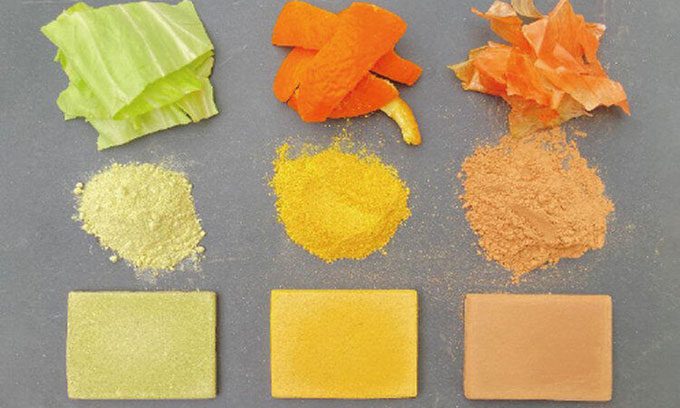Even after being exposed to air for 4 months, this new material does not change its flavor, does not rot, or get damaged by insects.
A research team at the Institute of Industrial Science, University of Tokyo, has discovered a method to create durable building materials from powdered cabbage leaves, seaweed, banana peels, and various food waste, reported Cnet on May 25.

Ground powders from food waste are pressed into building materials. (Photo: University of Tokyo).
“Our goal is to use seaweed and some common food waste to create building materials with a strength at least equivalent to concrete. Since we are using edible food waste, we are also interested in determining how the recycling process affects the flavor of the original materials,” said Yuya Sakai, an expert at the University of Tokyo.
In this new study, the expert team used a thermal pressing technique commonly employed to press wood powder into building materials. However, instead of wood, they vacuum-dried and ground various types of food waste such as onions, cabbage, and fruit peels.
The processing involved mixing the food powder with water and some seasonings, then pressing this mixture into molds at high temperatures. All products obtained, except for those made from pumpkin peels, passed the strength tests. The experts subsequently found a solution for the pumpkin peels.
“We found that napa cabbage, a material that yields products three times stronger than concrete, can be mixed with weaker materials made from pumpkin peels to enhance its sturdiness,” said Kota Machida, a member of the research team.
The materials, after being pressed into molds, remain edible, but the expert team did not disclose the hardness when chewing them. Even after being exposed to air for 4 months, they do not change flavor and do not rot or get damaged by insects. The development of edible materials is still in its early stages. However, in the future, it may be possible for humans to build unique houses and turn them into food if desired.


















































